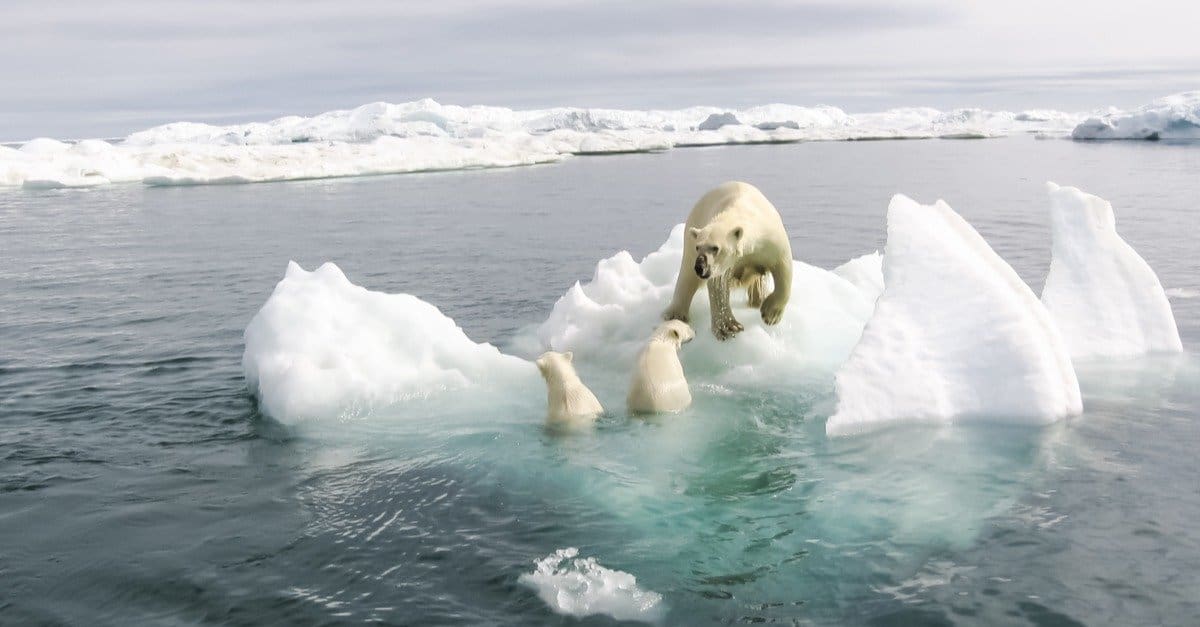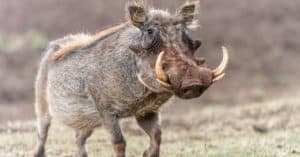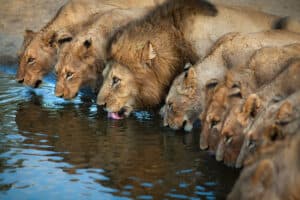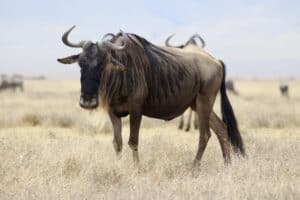- They also spell grave danger for moose, walruses, and Arctic foxes.
- Climate change could also see a rise in mosquitoes and drought in tropical areas affecting the populations of the African elephant.
Charles Darwin’s On the Origin of Species was first published in 1859, introducing much of the world to the evolutionary theory. By that time, he had managed to live through most of the first Industrial Revolution and see the other side of it. He lived among the smokestacks and factory mills of a London Charles Dickens described, at a time when the world’s most industrialized powers used the bodies of indigenous people to strip Africa, Central America, India, and many others of their natural resources — disturbing ecosystems and leading species to extinction in the process. And while humanity’s standing on human rights has largely evolved, our impact on the planet’s plant and animal life has been devastating. Extinctions and habitat destruction happen naturally, but our growing understanding of climate change’s impact on the world around us has only made clear how dire it is.
Our understanding of natural selection has also grown, and this knowledge has been integral in helping us understand the vectors of climate change. Most of us have seen pictures of emaciated polar bears wasting away as the polar ice caps melt, but that’s just one flashpoint in a world full of them. Despite the density and astonishingly specialized roles of many animals, most ecosystems aren’t prone to major disruption without a crisis on the scale of an invasive species, major disease, or catastrophic change in sea levels, temperature, or weather patterns. There are over 700 species of birds and mammals that are directly feeling the negative impact of climate change. These are just a few of their stories, but each one offers perspective into both the delicacy and the flexibility of the world’s ecosystems.
Polar Bears: The Immediate Victim of Global Warming
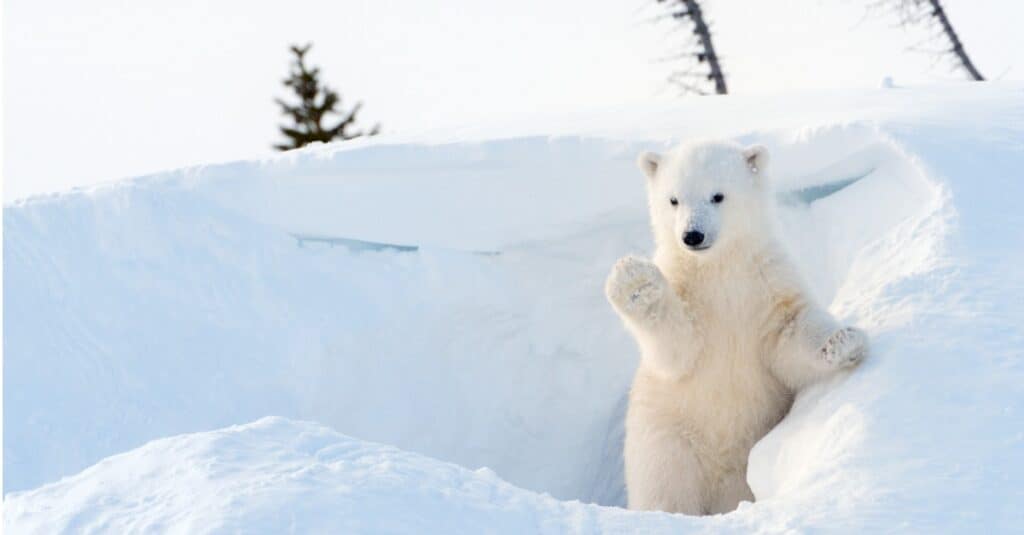
©iStock.com/AndreAnita
There’s a direct line of ancestry from the polar bear to the brown bear, and they continue to be quite similar in build apart from the snowy white coat of the polar bear. Despite this, it’s only been 1.5 million years since the family line split. It’s a reminder of how quickly a minor genetic variation and the promise of abundant and available prey can completely change the dynamic of an ecosystem. It’s also a reminder of how quickly these specialized creatures can plummet from healthy populations to endangered species to extinction when their environment is disrupted.
The loss of an apex predator would have devastating effects on practically any environment and in ordinary circumstances could lead to population explosions in prey animals, a rise in the spread of disease, and possible bouts of famine. In ordinary circumstances, a new order would form. But by current estimates, the effects of climate change will have melted the permanent ice of the Arctic entirely. It’s a ripple effect that could jeopardize animals as wide-ranging as moose, walruses, and the arctic fox — itself an endangered species.
Some of these animals may learn to adapt by relocating south and either supplanting or adapting to fit among the existing ecosystem. Unfortunately, the polar bear likely won’t be one of them. Polar bears rely on large prey like harp seals to survive. As polar bears flee, they find themselves in the territory of grizzly bears — which are both perfectly capable of defending their territory and capable of surviving on a significantly more omnivorous diet.
Mosquitos: A Deadly Beneficiary of Climate Change

©iStock.com/auimeesri
While it can be easy to cast the ups and downs of evolution in moralistic terms, but there are winners and losers to the effects of climate change — at least in the short term environment. Mosquitos thrive in hot and humid environments. Rising sea levels, unusual precipitation patterns, and climbing temperatures all contribute to an environment far more palatable to these tiny vampires. 2021 brought both the hottest summer ever recorded in the United States and an apparent spike in mosquito populations.
Unfortunately, a win for mosquitos is a loss for humans. Mosquitos are the most deadly animal to humans — with over a million deaths a year attributed to disease spread by mosquitos. That’s a serious public health risk for communities that already have to deal with infected mosquitos — but as temperatures warm at higher elevations, it will allow mosquitos into previously inaccessible ecosystems where they could have the impact of an invasive species and have a decimating impact on communities of people who neither needed to develop immunity to diseases like malaria and Zyka nor the infrastructure to confront such a public health emergency.
But a 2019 study published in Communications Biology suggested an even more worrying effect on mosquitos by global warming. They discovered through 200 million years of modeling that the speed at which mosquitos mutate and thus evolve rises dramatically in conjunction with both rising temperatures and CO2 levels. More mosquito breeds mean more mosquitos in general, but it could also bring new diseases and the ability to survive in more environments.
Elephants: A Critical Player in African Habitats
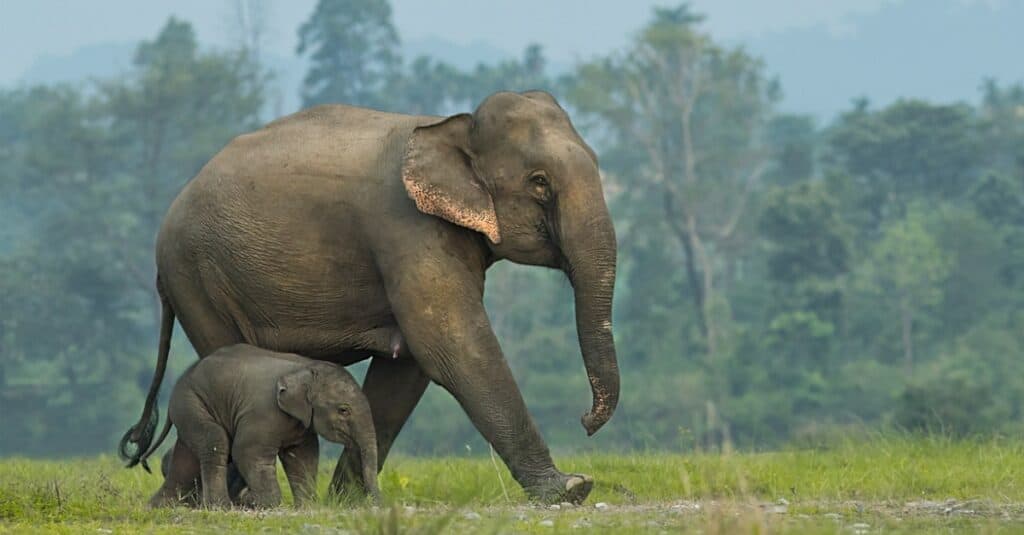
©iStock.com/saha_avijan
There are some distinct and notable differences between African and Asian elephants, but both are critically endangered species that face many of the same daunting challenges. Both find themselves hunted by human poachers seeking ivory, and the expansion of human agriculture, industry, and infrastructure has fractured their natural habitats.
Elephants are the largest terrestrial mammals, and the home range of an African elephant can extend 3,000 miles. Wandering herds can include up to 70 elephants, and these big guys have big appetites. In normal conditions, elephants are essentially the gardeners of Africa’s Sahara and Namib deserts. Elephants will strip down trees to feed on and rip apart limbs for use as tools, transforming the forest into shrublands and creating environments adaptable to a wider variety of smaller life. Their heavy hoofs crush long grass so that the shorter grass preferred by wildebeest and other grazers can grow.
Elephants offer manure for plants to grow and spread the seeds themselves — and they even bring water to the desert by digging watering holes. But global warming and unsettling precipitation patterns are jeopardizing the capacity of elephants to fulfill these duties. An investigation into droughts at the border of Kenya and Tanzania in 2007 and 2009 both saw the population of large mammals — including elephants — collapse. Africa is no stranger to droughts, but climate change has brought about a greater uptick in dry precipitation patterns. It also brings invasive species of plants with it. At our current pace, it’s impossible to know if it will be poachers or weather that kills elephants first.
Coyotes: A Lesson in Respecting Habitats
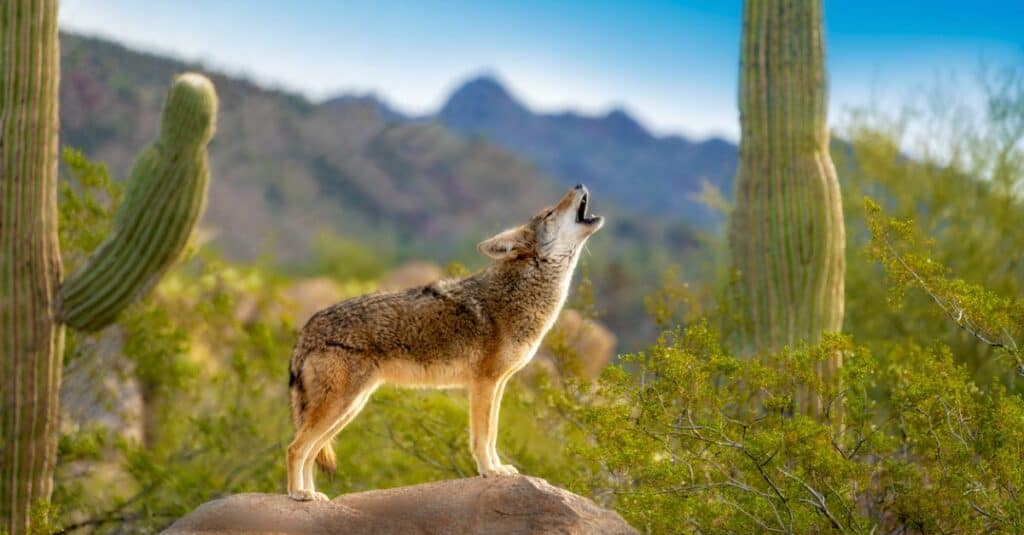
©JayPierstorff/Shutterstock.com
If any animal short of the cockroach is expected to survive the climate change shift, it might as well be the coyote. This clever canine already has a history of getting the best of us. By the 19th century, America’s aggressive expansion westward was already well underway to the degree that farmers and ranchers had driven away the traditional prey of wolves and the wolves had instead turned to domesticated cattle for prey. After pressure from interested parties, the federal government instituted a campaign to exterminate wolves. They nearly succeeded, and wolf populations have begun to recover.
But this campaign left an absence that the coyotes — close cousins of the wolf anyway — adapted to well. They excelled so well that they expanded from a relatively small habitat in the American Southwest into every American state except for Hawaii. Federal and private organizations have regularly waged extermination campaigns against coyotes, and roughly half a million are killed nearly every year. Ironically, we could just be perpetuating the problem. Coyotes have spread so prodigiously because they comfortably fit into most habitats and effectively control populations of smaller animals like mice and squirrels. Recent research suggests that indiscriminate killing of coyotes only destroys these stable family units and accelerates both breeding and expansion.
Climate change is driving coyotes and other predators like bears into cities en masse. Whether it’s due to wildfires or drought, coyotes survive quite capably in urban and suburban environments — although they don’t exactly thrive and often eat trash out of desperation. Coyotes still avoid humans and generally don’t pose a threat, but they’re in 91% of cities in the United States, and we doubt they’re going anywhere soon. Dealing with climate change will require us to not just try to minimize the root causes but to also learn to live closer with some aspects of nature than ever before.
Migratory Birds: An Increasingly Costly Trip
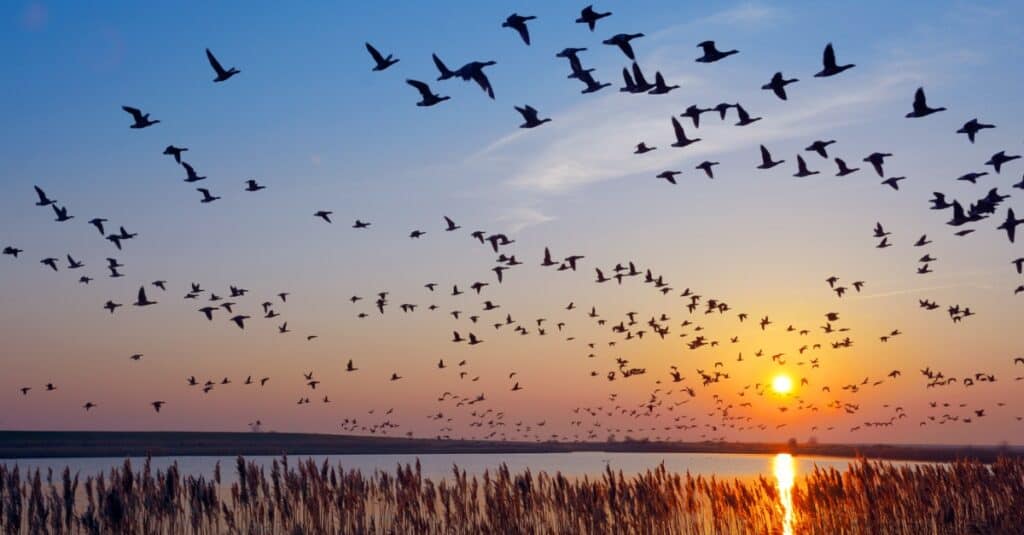
©eurotravel/Shutterstock.com
Flight is costly. Even with wings that have been in development for 150 million years, bones that are designed to minimize their weight, and conservation techniques like swooping, birds use a lot of energy in flight. Fortunately, they give that energy back into the environment by spreading seeds and pollinating flowers. In the case of migratory species, their impact can affect not just their current home and their destination but also everywhere in between. The two ecosystems at the ends of the migration point rely on birds to arrive at certain times — to pollinate flowers, serve as feed, or control populations of smaller birds and insects. And these birds also refresh the ecosystems in between by spreading seeds.
Major weather and temperature changes have been affecting the time of travel patterns for migratory birds and forcing some species that aren’t known for long-term migration — like the common flamingo — to adopt migration. And while some research indicates that natural selection is breeding smaller birds that are better equipped to handle rises in sea levels and temperatures, things are already quite dire. A 2019 report from the National Audubon Society revealed that overall bird populations in North America have plummeted nearly 30% since 1970. It’s a trend that’s not slowing, as many species could disappear entirely without mating grounds to retreat to. Even if the world can survive without birds, it will be a much less diverse place.
Up Next…
Keep reading these posts for more incredible information about key animal facts.
- This Ancient Bear Towered Over Polar Bears and Was One of the Largest Ever: Before there was the grizzly, there was the Arctodus. Read all about the predator which ruled the Pleistocene age.
- Paleogene Period: Animals, When It Happened, and Major Events: What was the Paleogene Era? How long did it last? What creatures prowled the earth’s surface? Find out right here.
- Discover the 23-Foot, Gigantic Ancient Crocodile With Fins: Its jaw was one-fifth of its massive body, and it breathed like a dolphin even though it wasn’t a mammal. Read all about this mysterious ancient monster here.
Thank you for reading! Have some feedback for us? Contact the AZ Animals editorial team.

